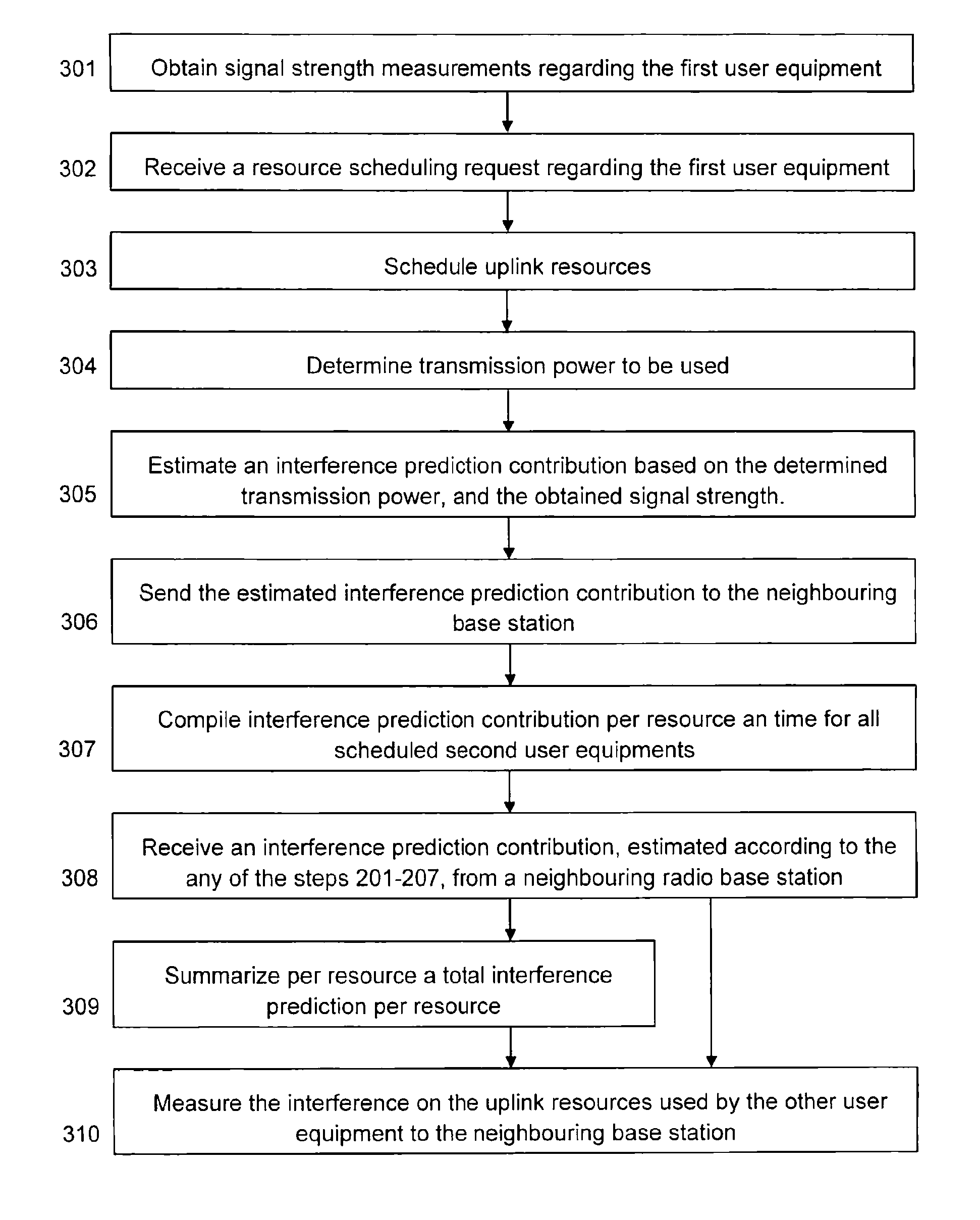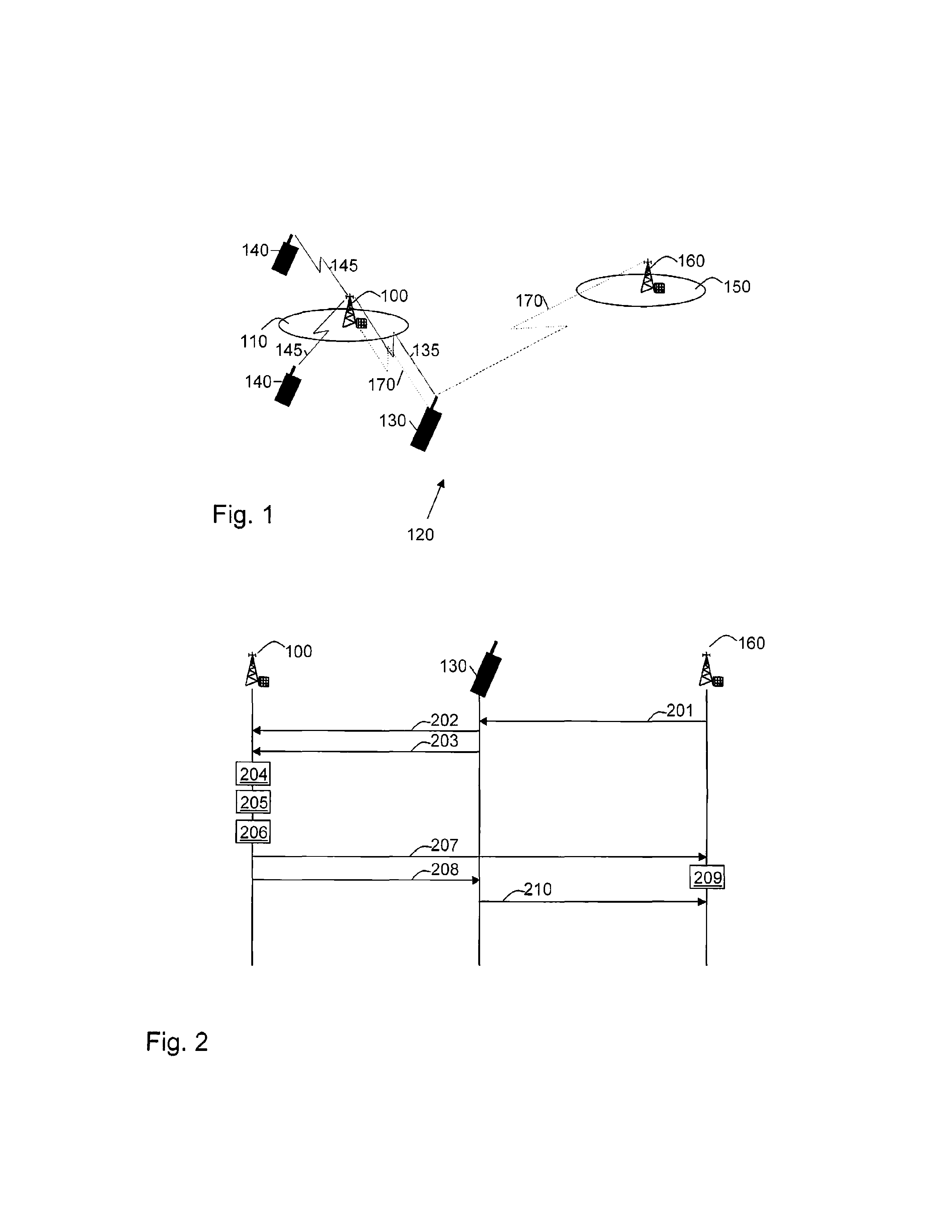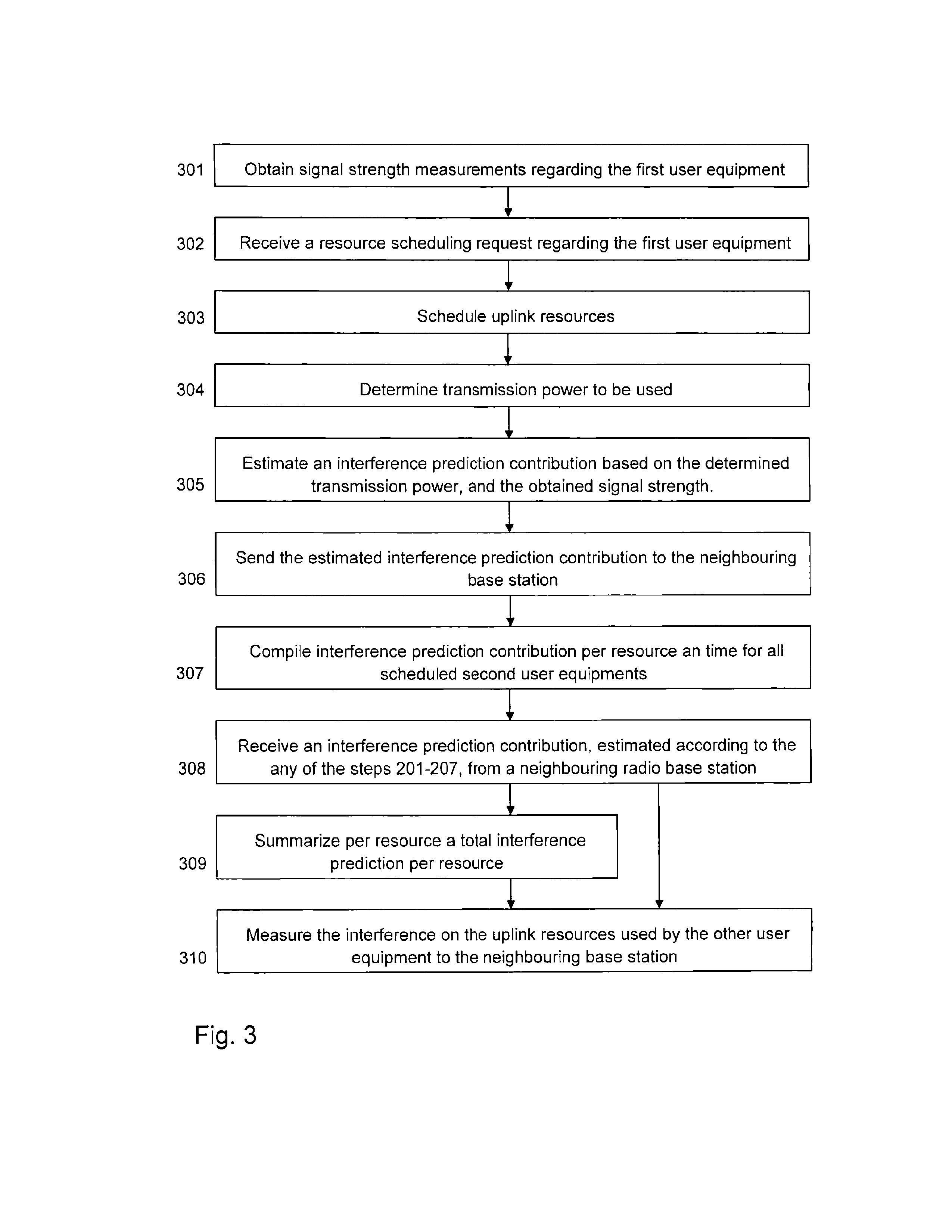Inter-cell interference co-ordination
a cell interference and interference technology, applied in the field of prediction of interference contributions, can solve the problems of reducing transmission power, unable to capture bursty packet data transmissions, and measured interference delays, so as to improve user experience, improve transmission efficiency, and improve the accuracy of radio link quality estimation
- Summary
- Abstract
- Description
- Claims
- Application Information
AI Technical Summary
Benefits of technology
Problems solved by technology
Method used
Image
Examples
Embodiment Construction
[0019]The invention is defined as a method and an arrangement which may be put into practice in the embodiments described below.
[0020]FIG. 1 depicts a base station 100 serving a cell 110 comprised in a radio access network 120 such as e.g. E-UTRA and Worldwide Interoperability for Microwave Access (WiMAX), UTRA, WLAN WCDMA GSM / GPRS. A first user equipment 130 is connected to the base station 100 which makes it possible for the first user equipment 130 to communicate with the base station 100, using resources 135 such as e.g. resource blocks, frequency bands, time slots), and / or spreading codes. Resource blocks are a frequency channels limited in time. The first user equipment 130 is connected to the cell 110, which cell 110 therefore is referred to as the connected cell 110. The base station 100 may further be connected to second user equipments 140, with which second user equipments 140, the base station 100 can communicate with using resources 145. The first user equipment 130 and...
PUM
 Login to View More
Login to View More Abstract
Description
Claims
Application Information
 Login to View More
Login to View More - R&D
- Intellectual Property
- Life Sciences
- Materials
- Tech Scout
- Unparalleled Data Quality
- Higher Quality Content
- 60% Fewer Hallucinations
Browse by: Latest US Patents, China's latest patents, Technical Efficacy Thesaurus, Application Domain, Technology Topic, Popular Technical Reports.
© 2025 PatSnap. All rights reserved.Legal|Privacy policy|Modern Slavery Act Transparency Statement|Sitemap|About US| Contact US: help@patsnap.com



